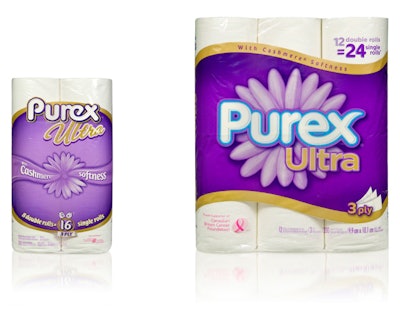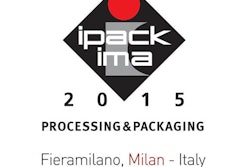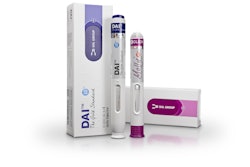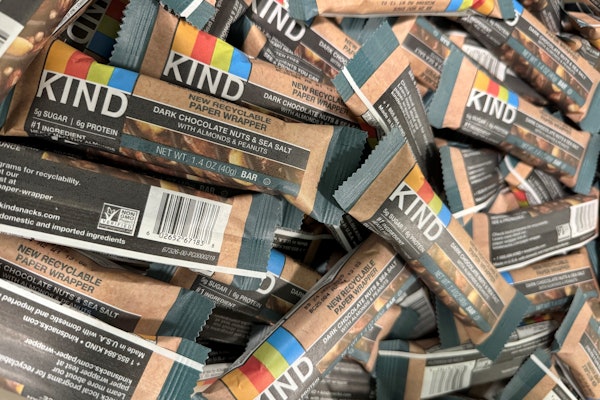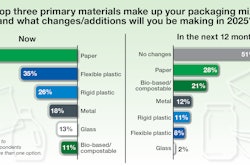It’s not always easy to decide when it’s the right time to update, or “revitalize,” your packaging. There are many factors to consider, but the motivation is often out of many brand owners’ hands. The current competitive environment is driving frequent package design changes in a number of ways.
Retailers are asking for new and better packaging, new entries are driving constant innovation, existing brands are piling on the SKUs, private-label products are changing the rules, regulations are requiring more information on packaging, and sustainability improvement requests are becoming ubiquitous.
Here’s what to consider when updating packaging design.
1. Explore the brand history and its equities. Study the current and past package designs closely. Consult previous design firms or advertising agencies. Marketers should dig deep for previous brand images in past packaging and advertising—and in consumers’ minds. Know what the brand represents to its loyal consumers, where it has been, and where it can go. And—just as importantly—know what the brand is NOT. A brand shouldn’t try to be everything to everyone. It’s totally possible that the brand exists as an idea, or a value, that is not tied to words, colors, or shapes. It may have no tangible visual or verbal equities, but that is rare. What is the brand story that consumers connect with? How can you enhance that emotional experience? What are the equities, the key visual messages, and the brand aspects that need to be future-oriented?
2. Expect the politics of heritage. Change can be difficult. Many brand owners have a sentimental attachment to the past. They believe that their brand logo or primary colors are a large part of their success, when the truth might actually be that those design elements are holding the brand back. In addition, some brand owners believe package design is an additive exercise, where more is better, when the opposite can often be true. Too many marketing messages can inhibit brand communication. And finally, some brand owners believe the package can do everything single-handedly. As much as a package represents a brand, most times a significant packaging change will benefit greatly from brand activation support from both marketing and advertising campaigns.
3. Understand loyal customers. What are your customers loyal to, exactly? How might they react to a change? Understand what consumers expect and what they look for. Learn how consumers shop for your product. Be aware that today’s consumers are less brand loyal than in previous generations, so it’s a delicate balance to create new excitement while remaining familiar and trusted. Sometimes it can make strategic sense to rely on the brand logo to carry a lot of weight. If you find that consumers have great loyalty, trust, and reverence for your brand in isolation, you may have greater leeway to experiment with bold designs.
4. Understand the strategic objectives. With every strategic decision come risks, so try to identify and target the brand’s specific “problems.” Keeping ahead of private-label competition and keeping ahead of counterfeiters are both good motivation, but frequent changes can dilute brand attachment when not managed with care. Defending your brand doesn’t just mean security features or hard-to-copy effects. Defending brand value today often means offering something new. Is there new ownership or management? Are you planning a new campaign, expansion, extension, or direction? Will there be room to revitalize again in a few years? Step back and remind yourself: Don’t engage in change for its own sake. Any change has to make strategic sense.
5. Know when NOT to revitalize. Should you defend your brand before you find yourself in a defensive position? Look at the competition set. Does your product look “dated”? Notice how print quality has been improving on many retail packages. Has your category left you behind? The truth is, not many products or packages look “cheap” today. If yours does, you’ll stand out for the wrong reasons. Even if your packaging doesn’t communicate the wrong message, find out if it is communicating the right one. Maybe a new shape, structure, or material will help your package stand out. But will the investment result in a quick return on investment? Market research can sometimes tell you if there’s opportunity for quick ROI by exploring new market territory. If you have the resources, pilot tests in limited markets offer the best evidence of ROI potential.
6. Hit the store shelves. One of the biggest mistakes in package design is designing a package without context. Packages rarely appear alone, even online. Most often, they live in hostile retail environments on overcrowded shelves. Make designers and marketers get out to the stores, experience real shelf sets, and understand the distinct challenges of different retail environments. And when revitalizing new packaging, test the new designs on mockup shelves or on virtual shelves online. Differentiating your brand from the crowd is often about going against the norm. Minimalist brand expressions can stand out amidst a sea of loud, colorful packaging. But the opposite is also true. Whatever the setting, don’t over-simplify. The simplicity pendulum has swung far out recently. It's now swinging back, but with caution.
7. Decide on “evolution” or “revolution.” Take the long-range perspective. Where is your brand going? Is the risk of change manageable? Evolutionary designs are helpful for brands with a large, loyal following that do not want to alienate but still require a facelift to drive relevance with a new consumer group or to clarify on-package communication. Revolutionary designs are great for brands that want to set themselves apart from the competition or brands that are introducing a new product category because these types of designs are foreign to consumers. Since consumers have nothing to relate them to, they will be disruptive; however, they can also be unrecognizable if they don’t look like they belong in the category. If you’re reformulating a familiar product, that’s another opportunity for a revolutionary design change. A package design change can communicate something important happened, and here’s where marketing and advertising can be helpful reinforcement. Explain the reason for the revolutionary change directly to consumers in straightforward language. Don’t make them stop and think—you risk losing them that way.
8. Reexamine the goal. What were the strategic objectives? How much change makes sense and mitigates risk? Was it a shopability issue? Did the category grow around you? Look at the competitive set. What do you want to communicate? What’s new? Are you adding an extension? Reconsider the brand proposition. Can the brand keep up through gradual evolution? Is the package at risk of appearing old, dated, or tired? Find the right compromise of new versus old. Have you lost touch with consumer? Are you introducing a new formulation? Is there a new nutritional benefit? Then you can leverage a revolution. But always maintain relevancy, visibility, and shopability. And make sure the brand promise of the packaging matches the value proposition that the brand delivers. For instance, it can be risky to over-promise with high-end packaging on a commodity product.
9. Create an emotional visual “language.” For a brand looking to revitalize their packaging, it’s important to identify a visual language and define the key principles that exemplify the emotional connection that your brand has with consumers. To get noticed in an overcrowded retail environment, brands need to stake out a unique emotional space. Packaging should be considered from a holistic viewpoint, including form, graphics, function, and communication. Oftentimes it’s advisable to identify a prototypical user, even if that’s an oversimplification. Characterize that person’s lifestyle, define it in words and images, and create a cohesive brand personality. Create visual mnemonics that will unite a brand under a single emotional framework.
10. Don't forget the basics. Brand recognition is still the first priority. But it's an emotional connection, not a cognitive one. Push it! Being a category leader in consumers’ minds means leading in a way that addresses consumers’ wants and desires. At the same time, caution is advised. Any change in brand position is a risk; only half of all packaging redesigns increase sales. Remember to synthesize a single primary message across all brand touch points. Distill marketing messages to two or three, at most. And, if possible, create a destination feel in the store. Whether or not you can secure placement in an end cap or a POP display, devise a packaging strategy that will create a successful “place” on shelf. This means creating a “blocking” effect, organizing the SKUs in logical ways, and making variety navigation easy for consumers of all kinds.
11. Plan ahead, way ahead. First, make sure your new brand platform affirms consumer expectations. If you disrupt the cues that consumers use, then you will frustrate them, and they will move on. Planning ahead means planning for potential brand line extensions and brand expansion into new categories. Even if you don’t go in those directions, the brand platform will be strengthened by the exercise. To take it to another level, plan the next redesign after the redesign you’re doing. And if you’re using a good/better/best strategy, confirm that it makes sense to consumers. For instance, make sure the bargain line doesn’t tarnish the potential of the high-end line with reduced expectations.
12. Double-check that communication comes through. Return to the start and the primary objectives. Packaging needs to answer—immediately and intuitively—two fundamental questions from a communication standpoint for a shopper: “What am I?” and “Why am I right for you?” If a package fails to communicate a clear answer to these two questions, then uncertainty rules the day, the shopper may become confused, and he or she may opt for a different brand. Visually, the goal is immediate brand and benefit recognition. If consumers can’t recognize your brand’s colors, shapes, or graphics instantly, you might be headed down a wrong and unproductive path.
